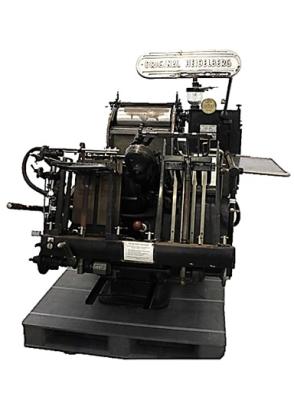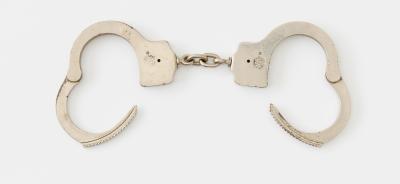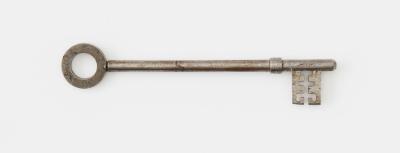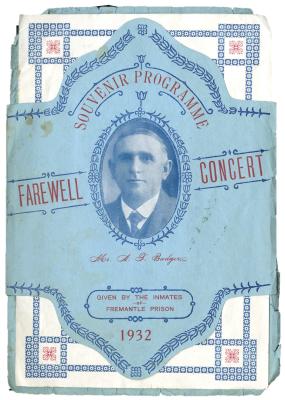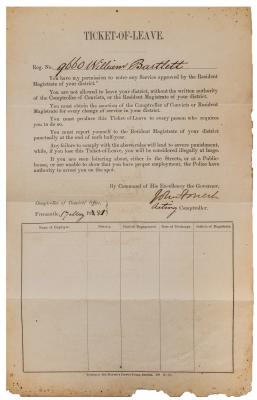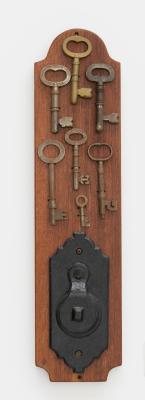PIANO
1922 - 1927(a) Large, wooden, upright Beale piano. Tall, wooden, upright body, with 35 black (ebony) keys and 50 white keys for a total of 85 keys. The white keys are covered in ivory with some damaged and many are worn. Two brass metal pedals are attached to the base. A small, metal, name plate is affixed on the underside of the keyboard, and reads, 'BEALE'. The serial number embossed on the metal frame is, '45850'. The number '55697 L' is engraved into the top right hand side of the side board.
(b - c) Two tall, rectangular, wooden piano stands. Both made of a rectangular piece of jarrah, with two large metallic screws. They are a poorly executed prison repair to replace the original castors, which are lost.
This Beale piano was acquired by Fremantle Prison in the 1920s to use during music concerts. Previously whenever a piano was required, one had to be brought into the Prison on loan. When the Prison closed in 1991, the piano was still on the stage of the Crown Theatre, having served for 68 years of entertainment by, and for, Fremantle’s prisoners. The piano appears in a 1979 photograph of the Crown Theatre, and also on stage behind the aerobics instructor in Fremantle Prison 1991 footage.
By 1996 the piano was missing from Fremantle Prison and Anne Brake (the Prison's Curator) made an appeal in the press to locate it. The piano was soon found to be on loan with a Fremantle theatre company, the Deckchair Theatre. It is unclear when the piano was returned to the Prison.
Parts (b) and (c) were removed in April 2015 during conservation work and replaced by castors.
Details
Details
'BEALE/ ALL IRON TUNING SYSTEM', '45850', '55697 L'
According to the list of serial numbers for the Beale Company, the serial numbers which appear of this piano, 45850 and 55697, would indicate a manufacture date of approximately 1922-1923 or 1926-1927. The first date range would be consistent with newspapers reports of a 1923 purchase of the piano for the Prison.
The arrival of the piano was much anticipated. From the 1910s many individuals and groups were volunteering their time to offer live entertainment for the inmates, and by 1921 the lack of a piano at the Prison had been identified. Funds to purchase an instrument was raised at various events, including the annual Boxing Day Concert held at the Prison. The piano was finally acquired in 1923, with Superintendent Badger proudly announcing the purchase at that year’s concert, also adding that funds raised on that night would be used to, “materially lighten the debt thus incurred”.
During the convict era, the northern end of what would eventually be known as 4 Division was used as Association Wards. The wards were designed to accommodate convicts who were getting ready for release into the community. Under the separate system, prisoners spent most of their time segregated in single cells, so living in these Wards allowed them to experience the complexities of communal living before being released. In 1862 the first floor Association Ward in 4 Division was converted into a Catholic Chapel, and in 1925 the ground floor Ward underneath was converted into a concert hall.
The new hall was named the Crown Theatre, and was used for all of the Prison’s concert performances and later to show feature films. The concerts were performed on Sunday afternoons, and were organised by the Prison Gate Committee. Women were able to attend from 1925, when an upper balcony was erected in the Theatre.
This piano is a typical example of the pianos produced by Beale in the 1920s. Beale pianos were manufactured in Annandale, Sydney, from 1893 to 1961. The founder of the firm, Octavius Beale, founded the company originally for sewing machines, before moving into the importation of pianos and reed organs in 1879. He also later succeeded in manufacturing an Australian made piano, more suited to the changeable Australian climate. Beale pianos proved popular, with almost 100,000 pianos manufactured by the company throughout its history.
